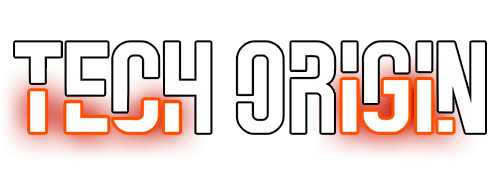NFT Catch-up: What’s Going On in 2023?
2021 saw the resurgence the NFT (Non-Fungible Token) as the shiny new thing for brands and finance bros alike to sink their teeth into. But as the crypto market crash of November 2022 seemed to also sink the public’s trust in non-traditional forms of investment, the noise surrounding NFTs also seemed to vanish. So, let’s do a whistle stop overview of how the sectors looking in 2023.
What even is an NFT?
An NFT, or Non-Fungible Token, is a digital asset (usually artwork) that can be traded and exchanged for money on the internet. Despite often being lumped into the same conversation as cryptocurrency, they are in fact very different.
NFT’s are back coded with blockchain that makes them unique and easily distinguishable from other tokens. This means that they can’t be replicated and are not interchangeable. Making them different from cryptocurrency which are interchangeable as long as they come from the same blockchain.
Think about it like this, two cryptocurrencies are equivalent to two cash currencies, whereas two NFTs are equivalent to two paintings. You can exchange two cash currencies (e.g., a dollar and a Euro) and they will maintain their transferred value, but you can’t exchange two paintings in the same way. This aspect is also the reason that people will invest in NFTs in the hopes they will increase in value. Much like a painting, an NFTs monetary value is based on a “perceived value”, so it is only valuable if people view it as such. Making them a risky venture for many investors.
But when NFTs represent an avenue for non-replicable digital assets including keys, identification, artwork, and even music, it’s unlikely that the industry will be abandoned.
Who’s in the NFT Game?
The nature and newness of NFTs means that the sector can often look highly complicated, and downright murky, from an outsider’s perspective. With many NFT creators preferring to be anonymous, it can be hard to distinguish what’s a brand and what’s a person. Thankfully we’ve put together a top 5 list of names that you need to know if you want to look like you know your stuff:
OpenSea is a peer-to-peer platform that specialises in rare and collectable digital items such as NFTs. With a wide variety of listed artists, including the heavy hitters in this list, it’s a must know forum for anyone wanting to dip their toe in the sector.
Yuga Labs is an NFT creator turned community that became famous in 2021 with their flagship Bored Ape Yacht Club (BAYC) collection which doubles as access to their community. After decentralising the IP rights to their three most famous collections, Yuga Labs has now launched its own meta-verse universe called Otherside.
Pak is a digital artist at the forefront of crypto media. Working in collaboration with household names such as Sotheby’s, their work often has an activist edge. A key example is their work ‘Clock’, which continuously counts down the days WikiLeaks founder Julian Assange has been imprisoned.
Beeple, also known as Mike Winkelmann, is the creator behind the famous “Everydays`’ project. For the past 10 years Mike has drawn and published a picture symbolising each day from start to finish. His NFT “Everydays: the First 5000 Days” sold for $69.3 million, making it the most expensive NFT ever sole to a sole owner. His other notable works include Human One and CROSSROAD.
CryptoPunk is another creator at the cutting edge of blockchain. With over 10,000 unique collectable characters stored on the Ethereum blockchain, they hold the many of the spots on the “10 most expensive NFTs ever sold” list.
What’s the Latest?
As of January 2023, the NFT industry is having a resurgence after a dismal end to 2022. With 9.2 million transactions happening in January, 37% up from December, many are keeping a close eye on what’s coming next. One of the main factors in this surge is the launch of Yuga Labs’s latest NFT collection, Sewer Pass, which act as keys for its new blockchain game. Alongside other landmark events such as Doodles acquiring an Emmy-nominated animation studio, Moonbird signing a contract with a Hollywood talent management brand, and Christie’s continuing to sell NFTs in the same world-renown auction rooms that sold the likes of Banksy, it’s likely that the legitimisation of NFTs will strengthen over the course of 2023.
This is good news for those who have already invested in the chain, as the higher the perceived legitimacy of the industry, the more likely members of the public will want to invest. Much like the stock market, this increase in popularity needs to be kept on a fine balance between a stagnant and flooded market. Thankfully, the industries tenacity in the face of big brand downfalls, such as the FTX scandal, suggests that NFTs are tougher than they look.
Next Steps into Web3
Amidst all of the peaks and troughs in the market, I believe that NFTs endurance speaks to a deeper change in what we as a society view as desirable assets. The biggest change we can see to NFTs during the first 6 months of 2023 is an increase in their legitimisation as investments and as owned property. With Christie’s and Sotheby’s firmly backing digital artwork, it gives the assets a solid foundation for investors, something that wasn’t seen two measly years ago.
As we continue on into the 2020’s it’s likely that we will see a further integration between digital and non-digital environments as the wider population becomes more comfortable with terms such as blockchain and NFT. Right now, we have only just scratched the surface of what this kind of tech can achieve, so you better keep up to date with what’s going down if you want to get ahead of the next curve.



